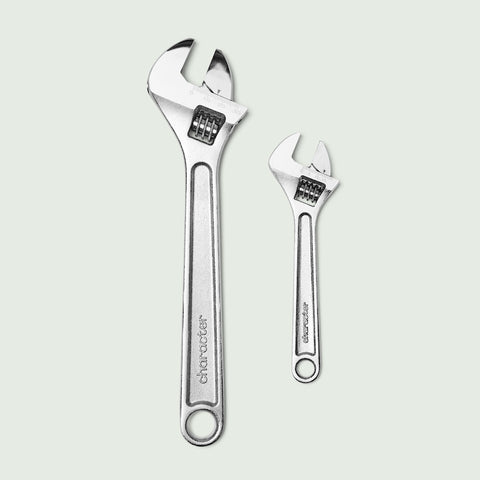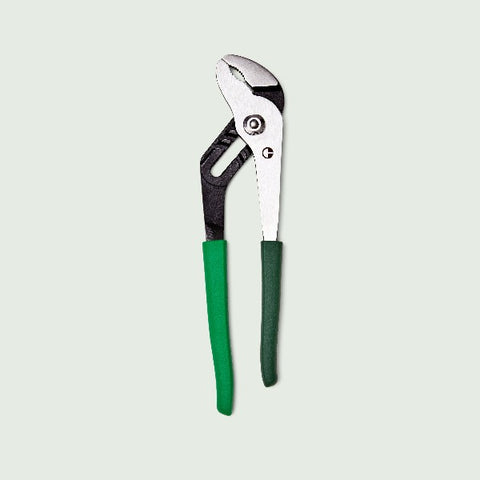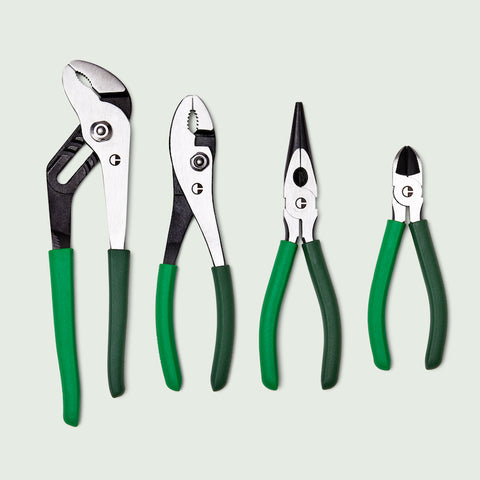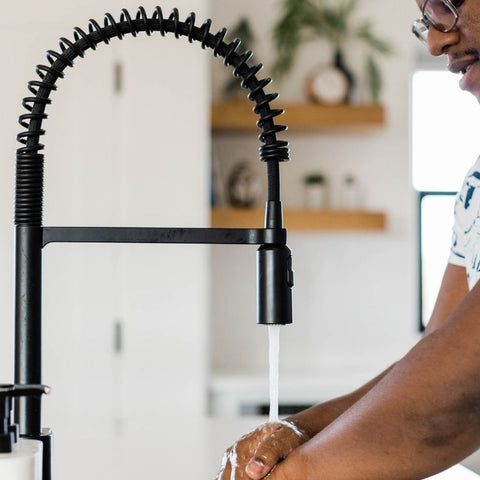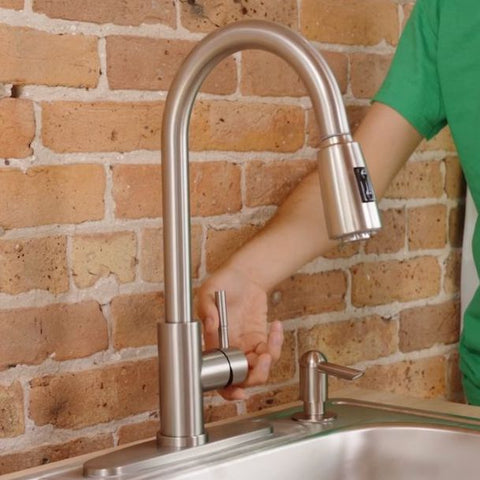
Using a TV stand or entertainment center to hold your TV could be taking up valuable square footage in your home. Mounting your TV on the wall is a cleaner, more modern look that can free up floor space. But it can be intimidating to hang such a heavy and expensive piece of equipment. But don’t worry — it’s easier than you think.
In this guide, we’ll walk you through picking a mount, where to place your TV, how to mount it, as well as common mistakes and how to avoid them. This home improvement project should take less than an hour!
Picking the Right Mount For Your TV
Before you drill any holes, it’s important to know what kind of mount you need. Of course, consider the weight and size of your TV. You’ll want to ensure any mount you purchase is rated to support it.
You’ll also want to check your TV’s VESA pattern. On the back of your TV are mounting holes, usually configured in a rectangular shape. This pattern is unique and varies from TV brands. You’ll need to purchase a mount that mirrors this VESA pattern.
Lastly, consider how you want your TV to move.
-
Fixed Mount: A fixed mount will secure your TV to the wall, but not allow any range of motion. This is best for tight spaces like set into a built-in entertainment center with cabinets to consider. You likely need your TV to be positioned in one singular location.
-
Tilted Mount: A tilting TV mount does what it sounds like — tilts. This kind of mount is preferred if you have a window or glare you want to avoid at certain times of the day. It’s also an excellent choice if you are limited on the height placement of your TV. For example, if you are looking to mount your TV on a fireplace and want to ensure the TV is centered, this may mean compromising the ideal height of your mount. A tilted mount gives you the option to move your TV to a comfortable location for your eyes.
-
Full-Motion Mount: A full-motion mount gives you the option to pull your TV away from the wall and turn it in any direction. These mounts are helpful for seeing the TV from different positions or accommodating versatile TV uses, such as hosting, doing workouts, or watching movies. If you have a lot of devices plugged into the back of your TV, this type of mount also allows for easier access.
How High Should You Mount Your TV?
You can certainly decide what is most comfortable for you when it comes to how high off the ground your TV is mounted; but if you’re not sure where to start, use this formula:
(TV Height ÷ 2) + Eye Level = Center of TV
TV Height = The vertical height of your TV (not screen size, but actual height).
Eye Level = The height from the floor to your eyes when seated (usually 40–42 inches for most people).
Example Calculation:
Let’s say you have a 55-inch TV, which is about 27 inches tall:
27 ÷ 2 = 13.5 inches (half the TV height)
Eye level is 42 inches
42 + 13.5 = 55.5 inches
Mount the center of your TV at about 55.5 inches from the floor.
Quick Reference Guide (Approximate center height from the floor)
42-inch TV → ~ 50 inches
50-inch TV → ~ 54 inches
55-inch TV → ~ 55 inches
65-inch TV → ~ 58 inches
75-inch TV → ~ 61 inches
Tools & Supplies You’ll Need
Before getting started, gather everything you’ll need to complete this task.
- Stud finder
- Drill
- Level
- Measuring tape
- Screwdriver
- Wrench
Option tools:
- Cable management kits
- Heavy-duty wall anchors if you can’t locate studs
- Power drill instead of manual screwdriver
What’s usually included with a TV mount kit:
- Wall Mount Bracket: The main metal frame that attaches to the wall
- TV Bracket Arms: Smaller brackets that attach to the back of your TV
- Screws & Bolts: A variety of screws to fit different TV models
- Washers & Spacers: Helps secure the screws and prevent damage to the TV
Step-by-Step Guide to Mounting Your TV
When completing any project, always adhere to the manufacturer's installation and safety guidelines for any products or tools you use. Our complete TV mounting guide has photos and bonus tips.
Pro Tip: If you need extra support at any step, we’re here for you! Text our pros at (762) 349-0349.
-
Prepare Your Workspace
First, grab your tools—if you’re unsure, just check the list above to make sure you’ve got everything. Next, protect your floor by laying down something like a drop cloth or even a towel. This will keep things clean and prevent any accidental scratches while you work. If your TV has a stand, go ahead and remove it. A screwdriver or power drill will do the trick! -
Attach the Mounting Plate to your TV
Grab your screwdriver and the mounting plate. This piece connects your TV to the wall mount, so it’s a key part of the setup. Some plates are a single piece, while others come in two—either way, the process is the same. Just line up the holes on the mounting plate with the mounting holes on the back of your TV. Then, use your screwdriver to secure the screws in place. -
Find the Perfect Height for your TV
After using the formula above, grab some painter’s tape and mark an outline of your TV on the wall to see if that’s really where you want it. This gives you a visual guide before making anything permanent. Do a quick check from different spots in the room. Sit in your favorite spot and make sure you won’t be straining your neck to watch. -
Find the Studs
Grab your stud finder and run it along the wall—it’ll light up or beep when it detects a stud. Depending on your mount, you’ll need two or three studs to secure it properly. Mark the center of each stud.
Pro Tip: Studs are usually 16 inches apart (sometimes 24). If you measure from a corner and mark every 16 inches, you’ll get a rough idea of where they are. -
Drill Pilot Holes
Since TV mounts use large lag bolts, we need to pre-drill pilot holes. This prevents the studs from splitting and makes it easier to drive in the bolts. Just hold the mount against the wall and align its bolt holes with your stud marks. Use a level to make sure it’s straight before marking anything. Then, mark the bolt hole locations on the wall with a pencil. Now you’re ready to drill the holes. -
Secure the Mount to the Wall
Grab your mount, ratchet wrench, and socket—and call in a helping hand for this part! Hold the mount up – Have your partner align the mount’s bolt holes with the pilot holes you marked earlier. Attach a socket to a ratchet wrench or an impact driver and drive a bolt into one of the top corner pilot holes, but don’t fully tighten it just yet. First, make sure everything is still straight, then drive a second bolt into the opposite top pilot hole. Now fully tighten both bolts. Drive in any remaining bolts, tightening them all the way. -
Mounting the TV
Time for the big moment! Have your partner lift the TV while you secure it in place. Carefully align the TV’s mounting bracket (attached to the back of your TV) with the wall mount bracket. Once everything is in place, locate the safety screws (also called set screws). These are what lock your TV onto the mount. Most safety screws have allen (hex) heads, and your mount likely came with a matching wrench. Tighten them to ensure the TV is securely attached. -
Finish Up
Finally, connect the TV cables and add any finishing touches! Attach any connected devices (cable boxes, video game consoles, etc.) into the TV and use a cord cover to conceal any exposed wires.
That’s it! You did it!
Common TV Mounting Mistakes & How to Avoid Them
It’s easy to make mistakes if you’re not careful. Luckily, most of these mistakes are simple to avoid with a little planning and attention to detail.
Forgetting About Studs
Mistake: Mounting the TV on drywall without securing it to studs. This can cause the TV to fall.
Fix: Use a stud finder to locate the studs and anchor the mount securely. If studs aren’t an option, use heavy-duty drywall anchors rated for your TV’s weight.
Mounting Too High or Too Low
Mistake: Placing the TV too high (hello, neck strain!) or too low for comfortable viewing
Fix: The ideal height is eye level when seated, typically around 42–48 inches from the floor to the center of the screen.
Not Leveling the TV
Mistake: Mounting the TV crooked.
Fix: Use a level before drilling to ensure everything is straight. Many mounts have built-in levels!
Blocking Ports and Wires
Mistake: Mounting too close to the wall, making it hard to access HDMI ports or power cables.
Fix: Consider a tilting or full-motion mount for easy access and check port placement before drilling.
Ignoring Cable Management
Mistake: Leaving cables dangling, making the setup look messy.
Fix: Use cable covers, raceways, or in-wall kits to hide wires for a clean look.
Skipping the Dry Run
Mistake: Not testing the TV placement before drilling holes.
Fix: Use painter’s tape to outline the TV on the wall and step back to see if it looks right before you commit.
What to Do If You’re Renting
If you’re worried about putting holes in the wall, there are no-drill TV mounts available that use strong adhesives or tension mounts that don’t require screws. Be sure to check with your landlord about what’s allowed, and always use wall-safe options to avoid damage. With the right tools and precautions, your TV setup will be secure and professional-looking—without risking your security deposit!
Troubleshooting & FAQs
Hit a snag? You can always text one of our experts! But here are a few common fixes you might need handy:
TV Isn’t Level After Mounting
If your TV isn’t level after mounting, don’t panic! It’s an easy fix. First, check the mount’s alignment. Sometimes, the mount itself might need a slight adjustment. If the TV is already mounted, most tilting or full-motion mounts have a small mechanism that allows you to tweak the angle slightly. You can also loosen the mounting bolts just enough to gently nudge the TV into place and then tighten them again.
How to Adjust a Wobbly or Loose TV Bracket
A wobbly TV is no fun, and it’s usually an issue with the bracket being either loosely attached or not aligned properly. If your TV is shaking or feels loose, check the mounting screws on both the wall bracket and the TV bracket. Make sure all screws are tightly secured—especially the safety screws that lock the TV in place. If the bracket still feels loose, double-check that you’re mounting to the studs, and not just the drywall. If necessary, add extra wall anchors for additional support.
Mounting your TV is a simple and quick upgrade you can do to your home this weekend. With a little planning and attention to detail, you can skip hiring a professional and tackle this yourself. Maybe you can even use that extra savings to buy movie snacks for your first watch party.
